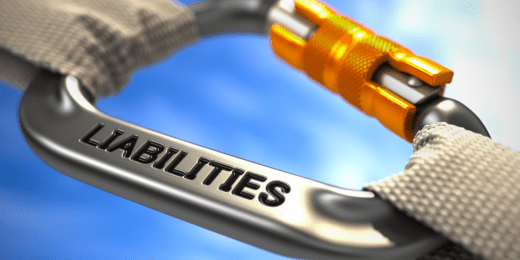Company directors have many responsibilities, including updating shareholder information at Companies House when their details change after incorporation. This information is displayed on public record, so it must be accurate and up to date to ensure compliance with the Companies Act 2006.
Companies House discloses the names and shareholdings of all company members (shareholders) on the public register. The first shareholders, known as ‘subscribers’, must also provide a service address (correspondence address). However, shareholders who join a company after incorporation don’t have to provide address details.
Key Takeaways
- Directors are legally obligated to keep shareholder information up to date, ensuring compliance and maintaining accurate public records.
- Register any shareholder changes in the next confirmation statement to reflect accurate ownership and shareholdings.
- A shareholders’ agreement can help manage share transfers and protect the interests of surviving members and the deceased’s family.
How and when to update shareholder information
If the details of any shareholders change after company formation, you must notify Companies House when you file your next annual confirmation statement (formerly known as an ‘annual return’). There are many reasons why a company may need to update shareholder information, including when:
- an existing shareholder changes their name
- a new shareholder joins the company
- an existing shareholder leaves the company
- upon the death of a shareholder
- an existing shareholder sells or transfers some of their shares to someone else
- an existing shareholder purchases or acquires new shares through a transfer or allotment of shares
- the company buys back some of its own shares
- upon the redesignation of shares (when a company changes existing shares from one class to another)
- the company introduces an employee share scheme
You don’t need to deliver the confirmation statement before the next filing deadline unless you want to update shareholder information immediately. However, it is considered best practice to report changes to Companies House as soon as possible. Doing so ensures the public register at Companies House reflects the new details immediately.
Tell Companies House when a shareholder joins or leaves a company
Directors must notify Companies House when a shareholder joins or leaves the company after incorporation. This is a legal requirement and ensures that the information on the Companies House register is correct and up to date. Such tasks are often delegated to the company secretary (if there is one).
Adding a new shareholder to a company
If a new shareholder joins a company after incorporation, the director must provide Companies House with their name on the next annual confirmation statement. Other reporting requirements depend on whether a new member becomes a shareholder through a transfer of shares or an allotment (issue) of shares.
Upon transferring existing shares from one person to another, the director must report the change in shareholdings to Companies House on the next confirmation statement. However, when a company issues new shares to someone, the director must also file a ‘Return of Allotment of Shares’ at Companies House within 1 month of the allotment.
The company’s statutory register of members must be updated as soon as possible to reflect any changes to shares or shareholders. Most companies keep this register at their registered office address or a single alternative inspection location (SAIL address).
Who can be a shareholder?
A company shareholder is a person (an individual or legal entity) who owns all or part of a company by purchasing or acquiring shares. They have certain rights, including the right to vote on important decisions and/or receive a share of profits as dividends.
There are very few restrictions on who can be a shareholder in a UK private limited company. Therefore, unless a company includes specific limitations in its articles of association or a shareholders’ agreement, any of the following may be shareholders:
- an individual person
- a pair or group of individuals (i.e. joint shareholders)
- a limited company, business partnership, or any other form of organisation or corporate body
While there is no legal restriction on minors holding shares, most companies will only accept individuals who are at least 18 years old (or 16 in Scotland). This ensures that all members have legal capacity to hold and exercise their contractual obligations and rights, including limited liability for the value of their shares.
It is common in most companies for at least one shareholder to also be a director. In small firms with only a few members, you may find that all shareholders are directors.
Removing a shareholder from a company
If a shareholder gives up their shares or passes away, you must inform Companies House on the next confirmation statement. You’ll need to provide the date on which the individual ceased to be a member, report the sale or transfer of their shares on the same confirmation statement, and update the company’s statutory register of members accordingly.
Do I need to tell Companies House if a shareholder’s address changes?
There is no need to tell Companies House if a shareholder’s service address (official correspondence address) changes unless they are a subscriber or a person with significant control (PSC).
What happens if a shareholder dies?
If a shareholder passes away, their shares form part of their estate. The executors of the deceased’s estate determine what happens to their shares. Whilst shares are typically bequeathed to family members, the company’s articles of association and shareholders’ agreement may contain certain restrictions on the transfer of shares.
Companies with multiple shareholders usually include pre-emption rights in the articles and a shareholders’ agreement. These pre-emption rights may stipulate that the remaining members have first refusal of the deceased member’s shares. This restriction helps minimise disruption, protect members’ rights, and ensure the business continues to operate in its usual manner.
If the family members of a deceased shareholder are unfamiliar with the company’s affairs, they may not possess the required skills and knowledge to make important business decisions. Therefore, their input and decision-making power could be detrimental to the company’s future. This is one of the reasons why shareholders’ agreements are so important.
It is wise to plan ahead for such eventualities to ensure a fair outcome for all parties involved. This is the best way to protect the interests of the company, the surviving shareholders, and the deceased’s family members.
Thanks for reading
We hope you’ve found this post helpful. Please leave a comment below if you have any questions. Explore the Rapid Formations Blog for more limited company guidance and small business advice.
Please note that the information provided in this article is for general informational purposes only and does not constitute legal, tax, or professional advice. While our aim is that the content is accurate and up to date, it should not be relied upon as a substitute for tailored advice from qualified professionals. We strongly recommend that you seek independent legal and tax advice specific to your circumstances before acting on any information contained in this article. We accept no responsibility or liability for any loss or damage that may result from your reliance on the information provided in this article. Use of the information contained in this article is entirely at your own risk.












Join The Discussion
Comments (30)
where does it show on the confirmation statement who the sahreholders are? Where does it show when changes, transfers are made?
Dear Thomas
Information on a company’s shareholders are found in part 4 of the Confirmation Statement (formerly the Annual Return). Please note that companies are only required to submit part 4 of the confirmation statement if there has been a change in shareholders in the period since the last confirmation statement was filed or, if it is the company’s first confirmation statement, since it was incorporated. There is no longer a requirement to report the company’s shareholder list on an annual basis.
Best regards,
Rapid Formations
I have just done this and I am still receiving the same error, The capital shares allocated does not match the shares allocated to shareholders
Shares transferred within ‘Shareholders’ must be re-allocated within the Confirmation Statement
Please correct this information in the Share capital and Shareholders sections.
It is driving me round the bend, I have checked all the transfers since the last confirmation statement and they are correct so why won’t it accept it? My capital section is also correct? Helpline at Companies House is not being helpful and don’t want to get fined but really struggling and deadline is tomorrow!
Thank you for your kind enquiry, Becky.
If you are using Companies House’s WebFiling service, then the ‘Transfer of Shares’ function in the shareholder section only removes shares from the transferor (the person selling the shares) and reports the date that it took place. It does not automatically reallocate them to the transferee (the person receiving the shares). To do so, you’ll need to add the recipient of the shares to the shareholder list and enter how many shares they were given.
Provided everything else is in order, this should mean the number of shares matches the share capital.
If you need any assistance with submitting your confirmation statement, you can purchase our Confirmation Statement express service for just £49.99 plus VAT from the following link: https://www.rapidformations.co.uk/confirmation-statement-service/
We trust this information is of use to you.
Regards,
The Rapid Formations Team
I had the same problem. There had been no transfers of shares.
So I went through the shareholder list (where you regsiter transfers) and simply ticked “save changes” (without making any changes).
That seemed to work. The error message disappeared. It seems to be a bug in the Co House system.
Thank you for your kind comment, Tejaph.
We are pleased you were able to resolve this issue.
Kind regards,
The Rapid Formations Team
If you have a large volume of minority share holders in a class of share with no voting rights, is there a way to list them as various to avoid publicly stating all the shareholder names?
Hi A Drew,
Thank you for your message.
All shareholders of a company need to be reported at Companies House, so there is no way to list them without publicly stating all shareholder names on Companies House. That they have no voting rights is not relevant. I hope this helps.
Kind regards,
Rapid Formations Team
I have acquired shares of a private company in May 2015. The company has not included my name in the shareholders’ list it filed to the companies house in its annual return July 2015 (post the deal) and these shares appear as if they are still owned by the their previous owners. I am led to believe this may have been done intentionally.
Is there any way to make the company include my shares under my name when it files the annual return this year (July 2016)?
Many thanks for your advice.
Hi Irina,
That is very strange, I imagine you are quite displeased.
What justification have they given for this ‘oversight’? Do you have a copy of your share certificate and/or stock transfer form?
The director is in breach of his/her legal duties under the Companies Act – any change of shareholders must be immediately recorded in the company’s statutory register of members (which should be kept at the registered office and made available for public inspection) and subsequently reported to Companies House on the following annual return, as you’ve mentioned.
I would advise speaking to the director in the first instance. If you have already done this to no avail, you should contact Companies House to report this. They will be able to advise on the next course of action – they may even investigate the director for failing to adhere to his/her legal duties.
Please let me know the outcome of the situation. Best of luck – hopefully it’s just an oversight and it will be sorted soon!
Rachel
Me and my mate planned to start a company.
We registered a company “ABCD” and did 50-50%. On 20th May 2016. Costed me £15.00
On 30th May he said he doesn’t want to go ahead so I changed the name of Company to “XYZ” costed me £8.00
Now when I called the bank to open the business bank account for XYZ they said you got to change the shareholders.
What is the procedure for that please?
We have not done any business yet.
Does it cost me any more money to change the shareholders?
If yes
Is it advisable to dissolve this company and register a Fresh company from a scratch ?
Any advice highly appreciated.
Kind regards
Hi Nav,
There’s no need to dissolve the company to update shareholder information. You simply need to complete a stock transfer form to transfer your friend’s 50% shareholdings to you.
When that is done, you need to file an annual return at Companies House to formally update the information on the public register of companies. It costs £13.00 to file an online annual return. You should keep a copy of the stock transfer form to show the bank, and a copy of your new share certificate if you choose to issue one to yourself. Finally you should update your statutory register of members (this should have been created at the time of company formation) to state that you are now the sole shareholder.
These articles provide the necessary information:
Transferring shares from one person to another
https://www.rapidformations.co.uk/blog/can-i-transfer-shares-to-another-shareholder/
How to prepare and file an annual return
https://www.rapidformations.co.uk/blog/how-to-prepare-and-file-an-annual-return/
Legal requirements: maintaining a statutory register of members
http://www.legislation.gov.uk/ukpga/2006/46/part/8/chapter/2
Free share certificate template
http://www.jonathanlea.net/2013/free-share-certificate-template/
I hope this information is sufficient, but please let me know if you need more help or guidance.
Best wishes,
Rachel Craig
Hi and thanks in advance,
I forgot to remove a shareholder (the company is not trading shares) and filed the Annual Return, can I resubmit one?
There is no new shareholder to take over that particular share, can this be transferred to an existing shareholder, and what do I need to do apart from filling the Return?
Thank you
Hi Aliki,
That’s not a problem – you can submit as many annual returns as you like, so you can complete a new one and update the shareholder information appropriately. Unfortunately, you will have to pay another £13 filing fee!
You can transfer the share to any one of your existing shareholders, yes. To do this, you must complete a Stock Transfer Form and update the information in your statutory register of members – you should have this register at your registered office address. Please transfer the share before you file another annual return, that way your registered details will be up to date at Companies House.
Here is a useful guide that explains how to transfer a share from one person to another: https://www.rapidformations.co.uk/blog/share-transfers-from-one-person-to-another/ It also contains a link to a Stock Transfer Form that you can use, so this will save you some time!
I hope this information has been helpful, but please do get back in touch if you need any further help.
Best wishes,
Rachel Craig
What do I need to do, if I put the company itself (in the same company) as shareholder by mistake, instead of the director?
Hi Subash,
Have you submitted your company registration application already, and has it been approved? If so, you will have to send an annual return to remove the company as a shareholder and add the director as a shareholder. It costs £13 to file an annual return at Companies House, but it’s very easy to do and you can submit it online.
Please read this blog for guidance: https://www.rapidformations.co.uk/blog/how-to-prepare-and-file-an-annual-return/
I hope this helps. Please get back in touch if you need any more help.
Best wishes,
Rachel
The Annual Return states the number of appointments held by each director. How are changes made to this information ?
Hello,
I don’t quite understand the question – could you clarify what type of appointment you wish to change? Do you want to add or remove a director, or do you wish to add or remove a shareholder who is also a director?
To add or remove a director, you need to file form AP01 (add) or form TM01 (remove) at Companies House. To add or remove a shareholder, who may or may not be a director, you need to complete a new annual return and send it to Companies House.
Please let me know if this does not answer your question!
Best wishes,
Rachel Craig
if a SH01 has not been filed at the time of allotment but the shareholdings have subsequently been updated correctly by the annual return, do you still have to file a retrospective SH01? thank you
Hi Helen,
Yes, you still have to file form SH01 at Companies House. This should really be done within 1 month of the allotment of new shares. The form is fairly easy to complete and file, so you should be able to get it done quickly and deliver it online via Companies House WebFiling service, by post, or using our free Online Admin Portal.
Take a look at this article about form SH01
https://www.rapidformations.co.uk/blog/the-return-of-allotment-of-shares-explained/
I hope this helps.
Best wishes,
Rachel
If you terminate a director using form TM01, do you still need to put their details in the next annual return?
Also if an existing shareholder leaves the company how do i transfer their shares to the new shareholder who joins?
thank you
Hi,
Once you have terminated a director’s appointment there is no need to add their details to next annual return – you should only enter company details that apply at the time of completing the annual return. You should, however, update the company’s statutory register of directors with the termination date of the director. This is one of the registers that the company should maintain at it’s registered office.
To transfer shares from an existing shareholder to someone else, you should complete a stock transfer form. The company should retain a copy of the form for its records and update the statutory register of shareholders/members with the date the shares where transferred – this is the date upon which the old shareholder ceases to be a member of the company. You should report these changes to Companies House when you file your next annual return.
Here are some blogs that go into more detail about these procedures:
Transferring shares (includes link to stock transfer template)
https://www.rapidformations.co.uk/blog/share-transfers-from-one-person-to-another/
How to prepare and file an annual return
https://www.rapidformations.co.uk/blog/how-to-prepare-and-file-an-annual-return/
Best wishes,
Rachel
Hi,
I have 2 surnames and I forgot to add the dash line “-” between them when I filled in the form for my company. Because of that I can”t open a bank account for my LTD.(reason: the name is not matching the one from my passport.) How can I change my share holder’s name in the fastest way possible.
Many thanks
Hi Alex,
What a frustrating situation! Banks can be very pedantic about these things. The quickest way to correct your name is to complete an annual return online. You can do this through Companies House WebFiling or via our online Admin Portal. Once it has been filed, Companies House will update your name on public record within approximately 2-24 hours.
Best wishes,
Rachel
If the subscribers’ contact addresses were input incorrectly, does Companies House need to be informed immediately or can it be left till next Annual Return?
Hi George,
You don’t need to worry about subscribers’ addresses – there is no need to update them if they change or are incorrect because Companies House will not alter these details on their database or the public register. If any subscriber/member changes their name, however, you should report this on the next annual return. More information is available here: https://www.rapidformations.co.uk/blog/how-to-update-shareholder-information-at-companies-house/
Best wishes,
Rachel
can anyone sees the name, address of a shareholder in a company house. l mean are all these details open to the public?
Hello,
Yes – Companies House places all these details on public record. Anyone can access this information.
Best wishes
I have problem with my shareholder how can sort out he don’t want to sign anything to finished the company
Thank you for your kind enquiry.
In general terms, to dissolve the company yourself, you would need to own at least 75% of shares in said company. If the other shareholder owns enough shares to stop the company dissolving (i.e. over 25% of shares), there is nothing you can do other than offer that shareholder to buy their shares from them.
I trust this information is of use to you.
Kind regards,
Rachel